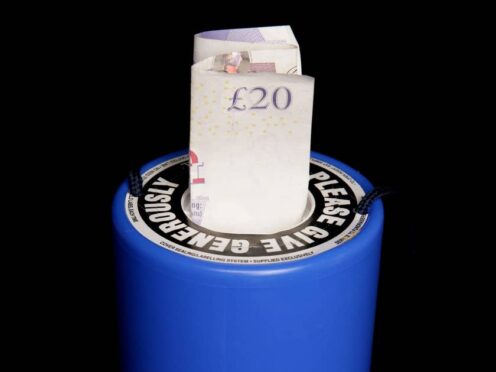The British public donated a record £13.9 billion to charity in 2023 with some of the country’s least affluent areas among the most generous, a new report reveals.
The total marks a 9% increase on the 2022 figure – which stood at £12.7 billion – as average monthly donations increased by nearly 40% to reach £65.
The report, produced by the Charities Aid Foundation (CAF), also shows that some of the UK’s poorest areas gave the most to charitable causes over the past year as a proportion of household income.

Donors in Belfast West, one of the most deprived parts of Northern Ireland where more than a quarter (28.5%) of children live in poverty, gave an average of 2.2% of their household income to good causes.
The wealthy new London constituency of Kensington and Bayswater gave the second most money to charity but this constituted just 0.5% of household income – the lowest out of all constituencies in the country.
The most generous constituency was Sheffield Hallam, where residents gave 3.2%.
But the report highlighted that the number of people regularly donating to charity had fallen from 65% in 2019 to fewer than six in 10 (58%) in 2023.
The CAF said it was only because donors’ average contributions had increased that the total figure had gone up.
The Covid-19 pandemic and cost-of-living crisis placed “significant pressure” on charities, who faced greater demand and declining income, the registered charity added.
Some 75% of British adults did at least one charitable activity in the past 12 months, including donating, volunteering, and sponsoring.
On average, constituencies in Scotland, Wales and Northern Ireland gave more, as a proportion of income, than those in England.
Neil Heslop, chief executive of CAF, said: “The act of giving connects us to one another in communities and across society: a more giving society can be one with a stronger social fabric.
“But it’s concerning that we’re relying on a dwindling group of regular givers, and the typical donation is static and eroded by inflation.”
“For these reasons, we need to foster a more widespread and sustainable culture of giving to support charities that are squeezed from all sides,” he added.
“The vital next step is for government to harness charitable giving for every part of the UK, by committing to drawing up a national strategy for philanthropy and charitable giving, ideally as part of a renewed approach to the whole of civil society.”
The report was produced from an online survey with a sample size of 13,164.
